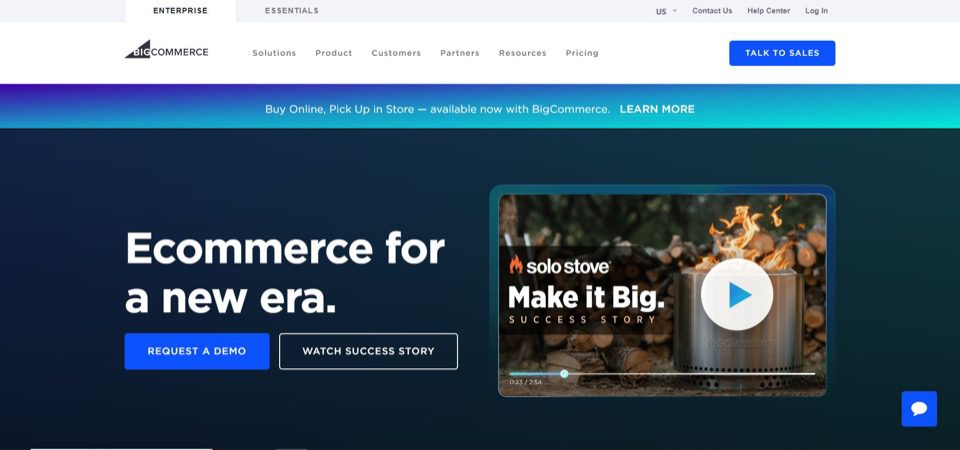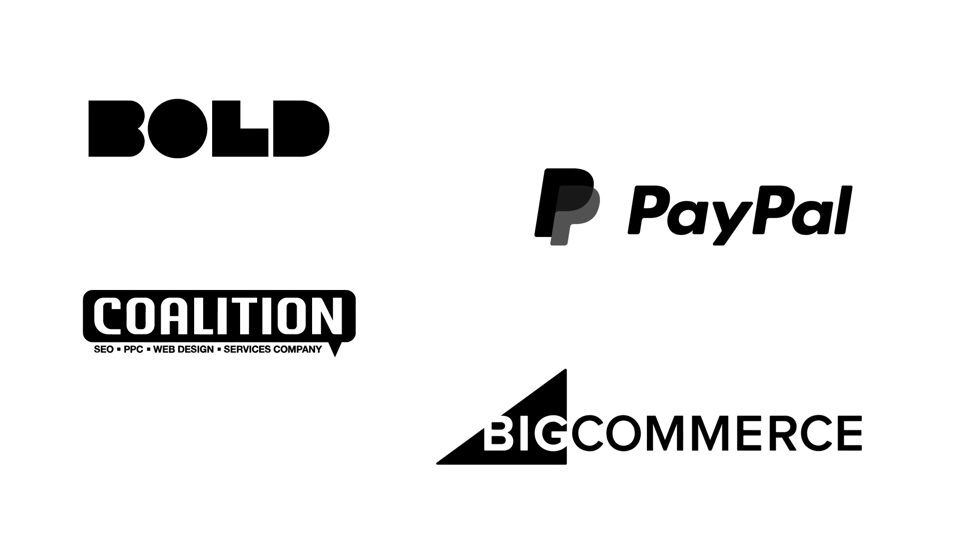
It’s no secret that explosive ecommerce growth is reshaping retail business. According to McKinsey, ecommerce sales doubled in the five years leading up to 2022. However, with sales set to double again by 2026, many businesses, handicapped by outdated tech stacks, are in danger of missing out on the next big ecommerce revolution.
Traditionally, retailers have competed with strategic price, inventory, promotions, and marketing outreach. Yet, as businesses race to deliver more connected and personalized experiences for their customers, they’re realizing that technology is the next new competitive differentiator.
Customers want personalized, connected, omnichannel retail experiences. They demand flexibility in their payment options and a fast, secure checkout that doesn’t require reentering information or cumbersome logins. The only catch is that a number of legacy ecommerce platforms aren’t compatible with a modern tech stack needed to power growth.
Enter composable commerce. Companies can customize their store ecosystems with discrete API-connected modules to make applications tailored to their specific needs. In other words, composable architecture lets brands choose the best available components to assemble a unique, lightning-fast checkout system. The options are truly limitless.
Table of Contents
Drawbacks of Legacy Technology
Systems become outdated when they are no longer supported or they can’t handle the evolving demands of their users. A legacy system could be widely in use and still have limited utility for you.
As an ecommerce retailer, a monolithic suite or tech stack can choke off opportunities and innovation, making it difficult to compete with businesses built on modern, open architectures. Here are a few ways older technology can slow growth for your business:
- Expensive Maintenance
One of the biggest issues with older systems is that their rigid builds make it very difficult for you to maintain and upgrade them. The maintenance process is time-consuming and often requires specialist know-how that is difficult and expensive to procure.
Large businesses that operate on legacy platforms often devote tons of IT resources toward keeping their systems running. Introducing any new functionality is always a gradual process and any real innovation often requires replatforming or pivoting to a new ecommerce tech stack.
- Downtime
If you’re an online vendor, there are few things more problematic than downtime. Downtime means your customers will abandon their purchases and seek out your competitors instead. It’ll also mean they’ll think twice before visiting your site again. As many as 88% of users won’t return to a site where they’ve had a poor experience in the past.
Legacy ecommerce tech stacks are much more likely to suffer downtime than newer, composable ones. Their outdated technologies can often be incompatible with modern systems and APIs and refuse to function as they should.
- Security
Legacy systems sometimes don’t support all the security measures that modern ones do. Broadly speaking, outdated platforms are more susceptible to a security breach that can cause downtime — if you’re lucky. The nightmare scenario is when hackers are able to gain access to personal or financial customer data.
This sort of incident can get you some really bad publicity and create a serious trust deficit with potential customers, even after you’ve resolved the issue.
- Competitive Disadvantage
Legacy ecommerce tech stacks are slow. There’s no getting around that. They’re slow to build out, cumbersome to maintain, and difficult to innovate. For new vendors, it can take much longer to get your product out to market and establish a revenue system. It’s also an opening that your competitors can exploit if they’re able to release their offering quicker and capture market share.
It’s also a serious drag on user experience. Older, clunkier systems can’t support the rapid page load times that modern, flexible ones do. And if it takes longer than three seconds, your prospects will simply bounce off the page.
How Composable Commerce Systems Can Help
Composable commerce is an approach to building retail websites that involves combining best-of-breed ecommerce components into a custom tech stack built for specific business needs.
It’s a flexible setup that allows you to advance your ecommerce offerings by including the most desirable components needed for your objectives. It means you’re not limited by monolithic, sole-source software providers who may not offer as robust solutions across all touchpoints in the commerce ecosystem.
Headless architectures are a mainstay of composable commerce systems. A headless approach involves decoupling a website’s frontend — which showcases content, formatting, and user interface — from its backend, which houses functionalities like pricing, checkout, hosting, and security.
With a headless build, you can deliver high-quality content experiences via the frontend, while integrating plugins that improve shopping and checkout experiences at the backend. The best part is that you can do this without having to worry about compatibility issues. Your ecommerce tech stack is built to support a combination of APIs that might not work together on a monolithic platform.
With the influx of brands online in recent years, shoppers are overwhelmed and the market is saturated with options. By innovating across the customer journey, you can push ahead of competitors who are still delivering cookie-cutter experiences that are indistinguishable from each other.
Composable Commerce in Action: ‘Limitless Checkout’ by Coalition Technologies

Checkout has long been one of the leakiest parts of the ecommerce purchase funnel. It’s also a problem that’s gone surprisingly unheeded. The average cart abandonment rate is as high as 70%. And nearly one in five shoppers attributes it to a “long/complicated checkout process.”
Ecommerce competition is too fierce to allow last-mile slippages when you’ve done all the work to attract prospects to your products. A flexible tech stack can come in really handy here by letting you build an ecommerce checkout solution that addresses all of your customers’ concerns.
Limitless Checkout is a composable checkout solution that helps boost your conversion rates and average order value. It’s powered by solutions from BigCommerce, Bold Commerce, and PayPal and engineered by Coalition technologies.
Limitless Checkout helps level the playing field for small and medium-sized enterprises (SMEs) while allowing you to unify omnichannel shopping and dynamically adapt customer experiences at high speed and low cost. Here’s a breakdown of how the constituent elements of its tech stack work together in a composable ecommerce ecosystem:
- BigCommerce
BigCommerce is unique in the SaaS ecommerce provider space because, unlike alternatives in the market, it prioritizes a composable ethos rather than attempting to consume all aspects of the commerce experience. Flexibility is built into its DNA through a commitment to “open SaaS.”
Its tech stack provides robust REST and GraphQL API endpoints that come with extensive ecommerce documentation, allowing developers to build composable and headless storefronts for unique use cases and checkout experiences. It’s an excellent enabler of solutions like those from Bold and PayPal Commerce Platform to help you deliver tailored checkout experiences.
Coalition is a distinguished BigCommerce Elite Partner Agency, and a number of our enterprise clients successfully host their headless websites on BigCommerce to see improved sales.
- Bold Commerce
Bold Checkout is an agnostic solution that lets you evolve your online store into a headless architecture — incrementally if you need to — while delivering superior purchase experiences for your customers.
Adding Bold to your ecommerce tech stack delivers faster speed-to-market with fewer development resources than even BigCommerce’s checkout SDK.
It allows you a quicker and easier implementation of added fees and varied shipping lines at checkout. You can easily integrate checkout optimizations such as editable product quantities and variants on the checkout page. It also enables customized insurance and post-purchase upsells without having to layer multiple third-party apps or custom code from scratch.
- PayPal Commerce Platform (PPCP)
The PPCP is an end-to-end payment processing solution for online merchants and platforms.
Nearly half of all shoppers abandoning their carts do so because of high extra costs such as shipping and taxes. With PPCP in your ecommerce tech stack, you have access to key features such as Buy Now Pay Later (BNPL) options to make purchases more affordable in the moment for your customers.
It allows you to accept multiple payment methods, including via Venmo and other region-specific providers, while also allowing you to easily customize pricing with partner fees.
- Coalition Technologies
In Limitless Checkout, we’ve engineered a solution that combines best-of-breed elements from across the ecommerce ecosystem. Our extensive web experience (over 18 centuries’ worth), particularly in the ecommerce space, has been key to its development.
Limitless Checkout lets you offer incredibly flexible and powerful checkout experiences for your customers and capture more revenue at a lower total cost of ownership. With our expertise backing it, you can be confident in deploying a robust, seamless solution that stands the test of time.
Book a Free Demonstration Today
Composable ecommerce platforms are fast becoming mainstream. A top-notch tech stack that lets you be nimble and agile in the face of market dynamics is a must if you want to remain competitive.
Future-proof your business with Limitless Checkout in your arsenal. Book a free demo and consultation today. Browse through our work or reach out to us if you’d like more information.


